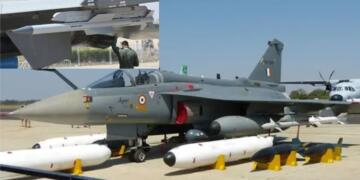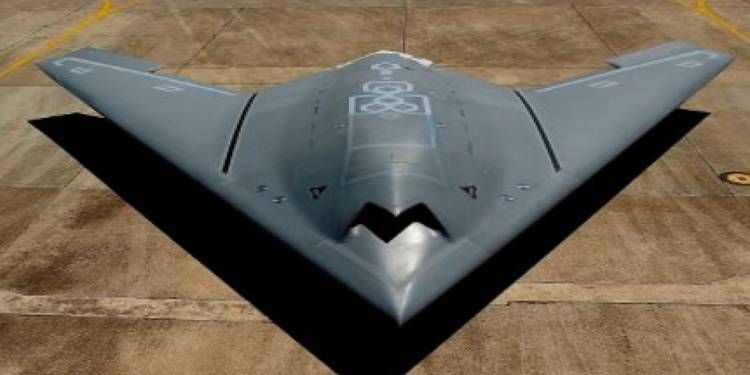One of India’s most ambitious defence programmes, GHATAK stealth flying wing combat drone has been uncovered for the first time. The stealth combat drone has broken cover in a video uploaded by Indian Institute of Technology (IIT) Kanpur. True to its name- GHATAK, which translates into ‘lethal’, the drone project promises to create a devastating unmanned strike bomber. LiveFist has reported that GHATAK is now a “fully funded and sanctioned national defence project”.
GHATAK is closely linked to India’s Advanced Medium Combat Aircraft (AMCA) fifth-generation fighter aircraft project. It can go as far as making India a major defence exporter, given the likely private sector participation going forward. And as such there wouldn’t have been a better time for IIT Kanpur, the principal academic institution associated with GHATAK to release the video.
Presently, the Nagorno-Karabakh conflict between Azerbaijan and Armenia has turned the spotlight on Unmanned Aerial Combat Vehicles (UACVs). Azerbaijan has extensively used drones or Unmanned Aerial Vehicles (UAVs) in the ongoing conflict with Armenia. And it has proved to be extremely devastating for Armenia. Videos of Armenian tanks being easily destroyed by armed drones have flooded Western media outlets.
The Azerbaijan-Armenia conflict has actually shown that combat drones can strike enemy regardless of all possible attempts to hide or camouflage your military assets from the enemy. These drones can go beyond human imagination in terms of efficiency, spotting targets and destroying them. Azerbaijan got its drones from two countries- Israel and Turkey.
Israel supplied Harop, or Harpy to Azerbaijan which is essentially a suicide drone that loiters over the battlefield, its remote operator searching for targets and once it locks a target, the drone flies in and destroys both itself and the target.
The other drone that Azerbaijan was able to use is Turkey’s Bayraktar TB2, which has the capability of destroying targets, returning to base, refuelling and going back into the battlefield all over again. If Azerbaijan has been able to saturate media outlets with images of Azeri forces seamlessly destroying Armenian armour and artillery, it is largely because of the camera-fitted drones that were pressed into service.
Azerbaijan-Armenia hostilities still do not illustrate the level to which next-gen, contactless warfare can go with use of technologies like unmanned platforms, long-range missiles, electronic warfare, air defence systems and surface-to-air missiles.
In this context, India’s GHATAK project that aims to compete with other similar projects like British BAE Systems Taranis, German/Spanish EADS Barracuda, American Boeing X-45 and Northrop Grumman X-47B, French Dassault nEUROn, Lockheed Martin’s RQ-170 and the Russian Mikoyan Skat, becomes incredibly important.
This is just the right time for India to start gaining an early commercial advantage by producing a world-class stealth unmanned bomber. Right now, the Azerbaijan-Armenia conflict has given a sneak peek into how future warfare would look like. But the world has not yet moved on to next-gen warfare. So, India still has some time to become a leading drone power in the world.
Presently, China, Turkey and Israel look like the ones playing a major role in combat or the suicide drones sector. The United States, the United Kingdom, and Israel, have used drones to target and kill terrorists. However, the US and Israel have restricted their exports in drones to unarmed reconnaissance drones. On the other hand, China and Turkey have no qualms in profiteering out of Middle East conflicts.
Turkey though might not be able to sustain its growing drone exports given the kind of backlash that it is facing from countries like Canada.
GHATAK is envisaged as a combat drone that can be launched stealthily near or even over hostile territory and destroy enemy targets with air-to-ground missiles. However, according to a 2018 LiveFist report, GHATAK would also be capable of gathering electronic intelligence or conducting airborne surveillance.
Therefore, once complete, GHATAK could be one of those unmanned platforms that can successfully substitute fighter aircrafts. India is quite literally racing against time here. By the time world moves on to next-gen warfare, India would want to fully develop its GHATAK project.
Even for its own security needs, India needs a world-class combat drone. In possible future conflicts with China, for example, hostilities could take shape of limited contactless warfare. Similarly, if India has to carry out anti-terror operations inside Pakistani territory, then sending in stealth UCAVs might be a better option than sending special forces or fighter aircrafts in order to reduce the risk of casualties or capture in enemy territory.
GHATAK is therefore India’s shortcut to becoming a military superpower which will not only make help it achieve defence export ambitions, but will also help India fulfill its own security needs more efficiently.































